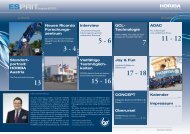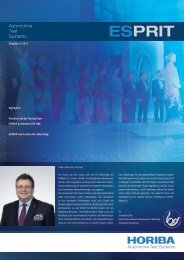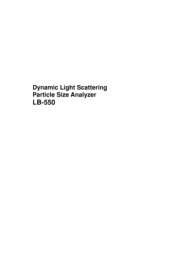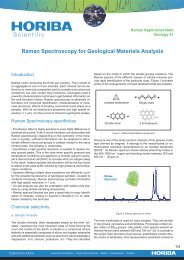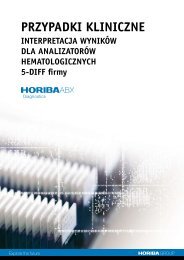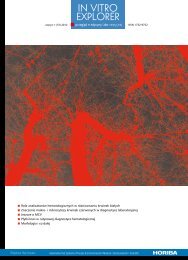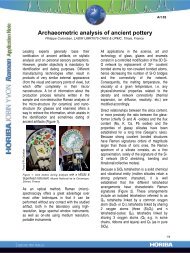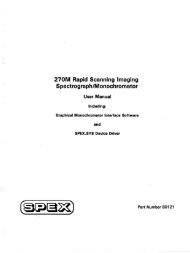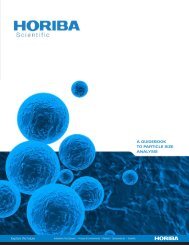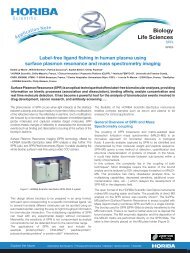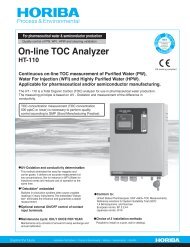Read More - Horiba
Read More - Horiba
Read More - Horiba
Create successful ePaper yourself
Turn your PDF publications into a flip-book with our unique Google optimized e-Paper software.
MEXA-1400QL-NX<br />
The MEXA-1400QL-NX system is a completely new<br />
development in the field of emission measurement. This<br />
innovative test system utilizes four Quantum Cascade<br />
Lasers (QCL) to detect the primary nitrogen compounds<br />
in the exhaust gas, thus allowing the engineers to analyze<br />
the effectiveness of exhaust gas aftertreatment devices.<br />
In comparison with other exhaust gas emission measurement<br />
technologies, the QCL is in a position to detect<br />
even extremely low concentrations of NO, NO 2 , NH 3<br />
and N 2 O in the exhaust gas stream precisely and with<br />
virtually no interference from other gases present there.<br />
The laser also provides excellent measurement accuracies<br />
over a very wide measuring range. Thanks to a heated<br />
sample handling system, the response time of the laser<br />
remains well within the strict EURO VI limits during<br />
Patented harmonic damper<br />
Up to now, HORIBA dynamometers are resonance-free up<br />
to 200 Hz and measure torque and power output up to a<br />
frequency content of 20 Hz.<br />
However, detecting torques with regard to wear, vibrations<br />
and parasitic losses now requires a bandwidth of 1000 Hz<br />
and more, whereas 100 Hz used to be completely adequate<br />
in the past. In order to reduce the vibrations and meet the<br />
increased requirements of the customers via superposition<br />
of the various frequencies, HORIBA has now developed a<br />
harmonic damper which prevents the dynamometer from<br />
causing artefacts at high torques. HORIBA was given an US<br />
patent for adapting this technology, which is normally used<br />
page 3<br />
News<br />
NH 3 measurements. This allows the QL-NX measuring<br />
unit to cover an extremely wide range of applications,<br />
from engine calibration to the development of aftertreatment<br />
devices for complex powertrains with alternative<br />
fuels.<br />
in the field of combustion engines, to dynamometer technology.<br />
HORIBA applies the damper to the unconnected<br />
end of the dynamometer. It uses the natural frequency of<br />
the dynamometer and applies a diametrically opposed oscillation.<br />
These diametrically opposed oscillations of the same<br />
frequency reduce the excitation of the natural frequency of<br />
the dynamometer and the resulting vibrations. Interfering<br />
effects of the damper on the test result are ruled out by installing<br />
it at the unconnected end. In addition, the damper<br />
is subject to virtually no wear at all as it is not burdened<br />
by the connecting forces between dynamometer and equipment<br />
under test.<br />
ESPRIT issue 01/2011<br />
<strong>More</strong> information:<br />
Andy Keay<br />
+49 (0) 6151–5000-1439<br />
andy.keay@horiba.com<br />
The ultra fine<br />
resolution of the<br />
QCL leads to<br />
sharp peaks.<br />
Inventors (left to right):<br />
Bryce Johnson,<br />
Norm Newberger<br />
and Isaac Anselmo.



